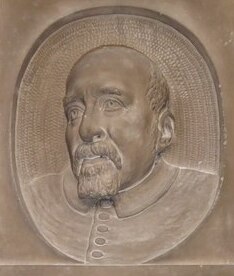## The English School of Mathematics: Robert Recorde and the Genesis of Mathematical Vernacular in England
The **English School of Mathematics** is a designation created by historians to refer to a collective of mathematical practitioners who together established the groundwork for the exploration of mathematics in England from the **mid-16th century** to the **late 17th century**. This group is notable because its evolution took place predominantly in the **English vernacular**, which was groundbreaking at a time when Latin was the prevailing language in scientific and academic discussions. These mathematicians were frequently interconnected through networks spanning several generations, which justifies viewing them as a cohesive identity.
Leading this movement is **Robert Recorde** (circa 1512–1558), an exceptional individual who is frequently regarded as the **father of the English School of Mathematics**—a designation I would usually refrain from, but might concede an exception here. Recorde’s contribution is significant as he was the first known author to issue a mathematics book **in English**, thus making mathematical knowledge accessible to a wider audience of **vernacular learners**, including tradespeople, navigators, and craftsmen. Let’s explore this intriguing era and consider why Recorde’s contributions were essential in forming a distinctive English mathematical tradition.
### Early European Impact on English Mathematics
The narrative of European mathematics prior to Robert Recorde is closely linked to the **libri d’abbaco**, which were instructional manuals used for teaching arithmetic, algebra, and geometry to apprentice merchants. These books thrived in continental Europe after 1202, particularly following the release of **Leonardo Pisano**’s (or Fibonacci’s) **Liber Abbaci**, which introduced the Hindu-Arabic numeral system and **double-entry bookkeeping**—both vital for efficient trade and commerce.
While many of these works began to circulate in print in continental Europe after the invention of the printing press, England lagged significantly. The earliest significant arithmetic textbook printed in England was Cuthbert Tunstall’s **De Arte Supputandi** (1522), but it was composed in Latin. However, a significant advancement occurred in 1537 with the publication, in English, of **An Introduction for to Learne to Recken with the Pen or with the Counters**, although it was a compilation drawn from foreign, rather than native, sources.
### Robert Recorde and *The Ground of Artes*: Cornerstones of English Vernacular Mathematics
Robert Recorde’s **The Ground of Artes**, first issued in **1543**, marked a pivotal advance in the chronicles of English mathematics. It was not only the **first authentic English arithmetic book**, but also a crucial text that remained in circulation for more than 150 years, with no fewer than 45 editions. Presented as a dialogue between a scholar and a master—a structure that promoted interactive education—the book was designed to assist those lacking formal instruction, providing straightforward examples for novice readers.
What distinguished Recorde was his innovative pedagogical approach. Echoing the earlier **libri d’abbaco** tradition, Recorde’s work taught arithmetic employing both **Hindu-Arabic numerals** and the **counting board method**, merging traditional and contemporary techniques. His initial editions focused solely on **whole numbers**, but by **1552**, Recorde had broadened the scope to encompass **fractions**, thereby increasing the book’s relevance to trade and navigation.
### Transitioning from Arithmetic to Geometry: The *Pathway to Knowledge*
In 1551, Recorde published **The Pathway to Knowledge**, a work that presented **Euclidean geometry** to the English-speaking audience. This text served as a translation and adaptation of the first four books of Euclid’s **Elements**, a structure that Recorde organized according to **Proclus**’ critique, differentiating geometrical constructions from theorems. In contrast to its more sophisticated geometrical counterparts on the continent, Recorde’s version simplified Euclidean geometry, providing explanations without proofs, for pragmatic use—specifically targeted at **surveying** and **map-making**.
### Astronomy and Cosmology: The *Castle of Knowledge*
In keeping with the sequential arrangement of the **quadrivium** (a medieval curriculum encompassing arithmetic, geometry, music, and astronomy), Recorde’s next venture was into **celestial mathematics**. His **Castle of Knowledge** (1556) addressed the **geocentric cosmology** of **Ptolemy**, yet included numerous unexpectedly favorable references to **Copernicus**’ heliocentric theory, published only 13 years prior. Although Recorde upheld the traditional geocentric model in his writings, he encouraged more advanced learners to investigate Copernicus’ framework—anticipating future developments in astronomy.
### The Emergence of Algebra: *The Whetstone of Witte*
Perhaps most notable among his works, Recorde introduced **algebra** to England through his **Whetstone of Witte**, published in **1557**. This text
